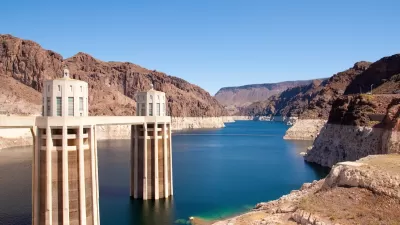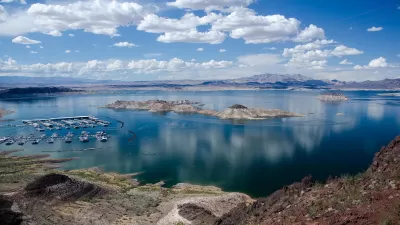According to one analyst, the agreement approved by the states doesn’t go nearly far enough to protect the river in the long term.

Writing in The Land Desk, Jonathan P. Thompson provides an analysis of the newly revealed Colorado River agreement, which, while historic, “won’t be enough to save the Colorado River if the climatic conditions of the last couple decades persist or worsen.”
Thompson provides a history of the Colorado River Compact, which divides up the river’s resources between Upper and Lower Basin states and, later, Mexico. But the allocations in the compact never matched real water supplies. With populations in the west growing rapidly, the water debt that has been embedded in river policy from the beginning is becoming too severe to be ignored.
Although details of the plan are still hazy, the known points are: “The Lower Basin states together will cut consumption by 3 million acre-feet over the 2023-2026 period, with at least 1.5 million acre-feet in cuts coming by the end of 2024,” and “Up to 2.3 million acre-feet of those cuts will be federally compensated by about $1.2 billion in Inflation Reduction Act funds.”
The problem, Thompson writes, is that the promised cuts are just half of the minimum amount required to support the river and its reservoirs, according to the federal government. And, as Thompson points out, the deal only covers the next few years. “What then?”
FULL STORY: The breakdown on the Colorado River ‘breakthrough’ water deal

Maui's Vacation Rental Debate Turns Ugly
Verbal attacks, misinformation campaigns and fistfights plague a high-stakes debate to convert thousands of vacation rentals into long-term housing.

Planetizen Federal Action Tracker
A weekly monitor of how Trump’s orders and actions are impacting planners and planning in America.

San Francisco Suspends Traffic Calming Amidst Record Deaths
Citing “a challenging fiscal landscape,” the city will cease the program on the heels of 42 traffic deaths, including 24 pedestrians.

Adaptive Reuse Will Create Housing in a Suburban Texas Strip Mall
A developer is reimagining a strip mall property as a mixed-use complex with housing and retail.

Study: Anti-Homelessness Laws Don’t Work
Research shows that punitive measures that criminalized unhoused people don’t help reduce homelessness.

In U.S., Urban Gondolas Face Uphill Battle
Cities in Latin America and Europe have embraced aerial transitways — AKA gondolas — as sustainable, convenient urban transport, especially in tricky geographies. American cities have yet to catch up.
Urban Design for Planners 1: Software Tools
This six-course series explores essential urban design concepts using open source software and equips planners with the tools they need to participate fully in the urban design process.
Planning for Universal Design
Learn the tools for implementing Universal Design in planning regulations.
Heyer Gruel & Associates PA
JM Goldson LLC
Custer County Colorado
City of Camden Redevelopment Agency
City of Astoria
Transportation Research & Education Center (TREC) at Portland State University
Jefferson Parish Government
Camden Redevelopment Agency
City of Claremont





























